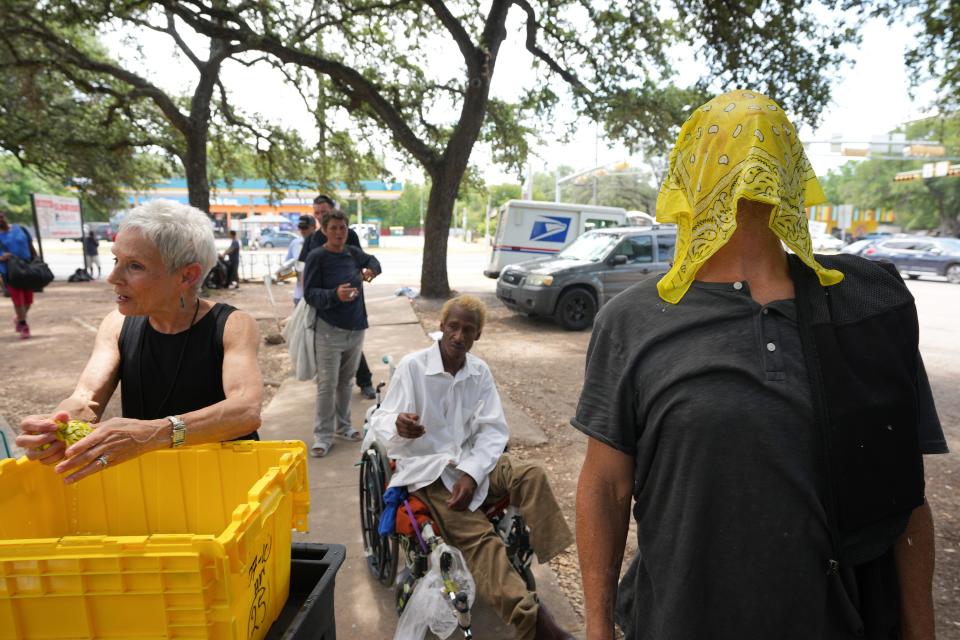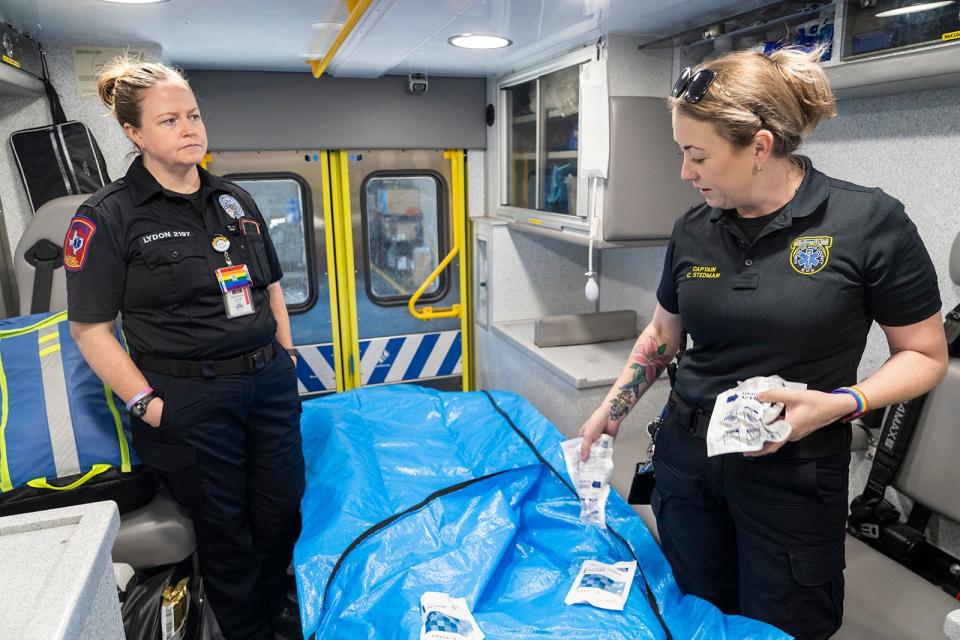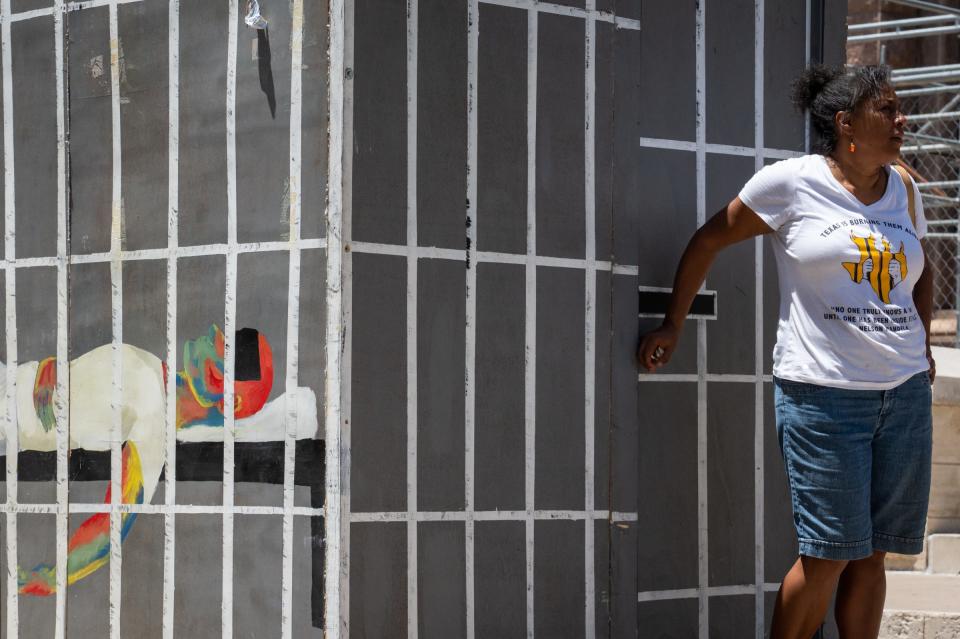Too hot! Texans grapple with an unrelenting heat wave
Austin's Camp Mabry set a heat record Thursday after spending 10 consecutive days with temperatures reaching or exceeding 105 degrees for the first time in recorded history.
And the unrelenting Texas heat isn't just keeping people in search of shade and cool beverages; it's also affecting the demand on the state's electric grid, increasing drought intensity throughout the state and leading to more heat-related medical emergencies than have ever been felt before in Austin.
The forecast for the next several days, and weeks, points to a continued scorching trend, which already has caused several Austin-area counties to institute burn bans and led to heat warnings and advisories remaining in effect.
"I would say the forecast is basically on repeat for the next several days and maybe even into the next week," said Emily Heller, a lead forecaster with the National Weather Service in the Austin and San Antonio region. "We have an upper ridge of high pressure, which is bringing all of this warmth to our area, and it's really not budging much."
With the heat ridge remaining stagnant across the region, which is somewhat atypical, Heller said, drought conditions that had been improving are now backsliding. On Thursday, the National Weather Service announced that drought has worsened across the Interstate 35 corridor and throughout the Hill Country over the past four weeks, resulting in drought category increases across much of the region.
Areas of Travis County and to the west are experiencing extreme and exceptional drought, with regions to the east of the county feeling severe and moderate drought.
"We will probably see that drought worsen again, over the next month or two, as we continue to see these drier and hotter conditions," Heller said.

'Tired in a different way'
For the first responders tasked with helping those who become overheated under the unrelenting Texas sun, the constant exposure to high temperatures is taking a toll.
"As soon as you go outside, you just immediately feel that oppressive heat hitting you," Cassie Lydon, an Austin paramedic, said during a ride-along with the American-Statesman on Thursday.
Lydon, who said she is thankful not to have responded to a heat-related call this year, finds it necessary to prepare for her shifts a day early by staying inside and drinking water constantly.
More: Phoenix is breaking heat records, but has Austin actually felt hotter?
"I come home from shifts tired in a different way when it's this kind of heat, and I take very good care of myself," Lydon said. "I hydrate really well; I usually drink a gallon of water a day. But for me, my shift starts the day before I come in to work."
According to the most recent data available, Austin-Travis County EMS responded to 92 heat-related illness calls July 10-16.
Over the course of July, paramedics have responded to 176 heat-related calls, which is on pace to break the monthly record. That averages out to about nine calls per day, compared with approximately eight calls per day in June, when paramedics responded to 234 heat-related calls total.

"When our bodies don't have time to cool, that's when your heat-related illnesses can really start to creep up on people, especially those vulnerable populations," Heller said. "So I would say it's kind of more of a sneaky weather hazard."
The prevailing advice on beating the heat remains drinking water and staying hydrated, taking breaks when working and playing in the sun, wearing sunscreen, finding shade or a cool place when you're feeling overheated and wearing white, light clothing when you expect to be outside for any length of time.
Another option available to the public is cooling centers. According to a map available online from the Texas Division of Emergency Management, there are 46 cooling centers throughout Travis County.
From the beginning of May through July 16, medical first responders have handled 436 heat-related illness calls.
More: Austin issues outdoor burning restrictions due to dangerous fire conditions in Central Texas
Christa Stedman, a public information officer with Austin-Travis County EMS, said that in past years such calls seemed to start with the summer heat and taper off as the season continued. But this year the heat has not let up and neither have the calls.
"This is the heat version of Uri," Stedman said, referring to the deadly 2021 winter storm.
Not a political issue, but a humanitarian issue
While many people will have at least some way to get out of the heat, inmates in more than two-thirds of Texas' 100 prisons do not have air conditioning in their living quarters or a real option for relief during the day or night.
Advocating for prisoners in facilities without air conditioning, groups visited the Capitol on Tuesday to demand that the state's political leaders do something to address what has become a "living hell."
"This state requires that our animal shelters must be air-conditioned, but when it comes to people, who are we?" said state Rep. Carl Sherman, D-Dallas. "It's inhumane. ... This is not a political issue. This is a humanity issue."

On Tuesday, 26-year-old Anthony Jennings died in a Texas Department of Criminal Justice facility in Huntsville, according to a custodial death report from the office of the attorney general.
While Jennings' cause of death is to be determined, pending an autopsy report, complaints of heat illness have preceded other deaths in the facility.
Jennings was not receiving treatment for any medical conditions and had no known pre-existing medical conditions, according to the report.
In response to Tuesday's news conference at the Capitol, Amanda Hernandez, the Texas Department of Criminal Justice communications director, said preliminary findings show that prison deaths are "not heat-related." The department has not reported a confirmed heat-related death since 2012.
Reporting from KXAN News indicates that at least 58 people have died in the state's prisons and jails since June 1.
What about the electric grid?
Throughout the past week, demand on the state's electric grid reached multiple all-time highs.
On Monday, the grid topped 82,000 megawatts to supply consumer demand. But that record was short-lived and outdated by Tuesday, as the number reached nearly 82,800 megawatts.
Along with the total output records, renewable energy sources accounted for more than 31,500 megawatts of generation earlier in the week, also an all-time record.
Over the course of the legislative session, lawmakers pushed bills to ensure that the grid could meet demand in hopes of avoiding a catastrophic power outage like the one that occurred during the historic winter storm in 2021 that left hundreds dead and millions of Texans freezing.
Most of the Republican-led efforts focused on new gas-powered generation and a fleet of backup plants that would kick in if the broader system went down. Much of that would have come through billions of dollars in funding to build the plants while continuing to seek out dispatchable energy sources as opposed to renewables such as wind and solar.
However, the marquee grid legislation sought by Lt. Gov. Dan Patrick, the Senate's presiding officer, never came to fruition and died as the session ended. As a result, grid legislation signed by Gov. Greg Abbott as received from the Legislature dealt with more clerical and minute issues instead of any major reforms or investments.
The U.S. Department of Energy announced this month a plan to invest $60.6 million in the state's power grid to prepare for future hazardous weather and prevent further disruptions.
On Thursday, the Texas Consumer Association and AARP sent a letter to the Public Utility Commission of Texas, which oversees the electric grid, asking the agency to issue a moratorium on disconnecting service from residences because of the heat wave.
"The U.S. Census Bureau reported in March that 44.8% of Texans face energy insecurity," the letter says. "This has two implications — first, that many low-income Texans are setting their thermostats at potentially unsafe high levels to limit their upcoming electric bills, and that millions of Texas households may already be in arrears for electric bill payment or have already been disconnected from electric service."
Citing it as a public safety matter, the two organizations are asking that the moratorium be extended through Sept. 15 to help people make it through August, which is historically one of Texas' hottest months.
In a statement, the Public Utility Commission said agency rules "prohibit electric providers from disconnecting service to any customer during extreme weather events."
"Moratoriums triggered by extreme weather conditions that prohibit service disconnections are currently in place in counties across the state and will continue in effect as extreme conditions warrant," PUC chief press officer Ellie Breed said.
Additionally, agency rules mandate that retail electric providers offer deferred payments upon request on bills that become due during extreme weather events.
"If someone is experiencing financial challenges related to higher-than-normal energy bills, they should contact their provider and call 211 for information on assistance or resources available to them in their area," Breed said.
As for the extreme weather, a slight reprieve of a few degrees at the beginning of the week is possible, with temperatures expected in the low 100s, said Heller, with the National Weather Service, reluctantly using the word "relief."
But it feels as if heat is here to stay.
"While we do see these temperatures in the summertime, the prolonged conditions of these hot temperatures are really what makes it extremely dangerous," Heller said.
Statesman staff writers Maddie Scott, Ryan Maxin and Amethyst Martinez contributed to this report.
This article originally appeared on Austin American-Statesman: Too hot! Texans grapple with an unrelenting heat wave

